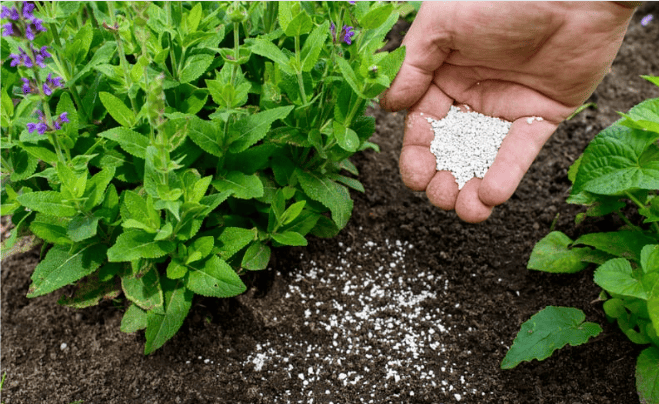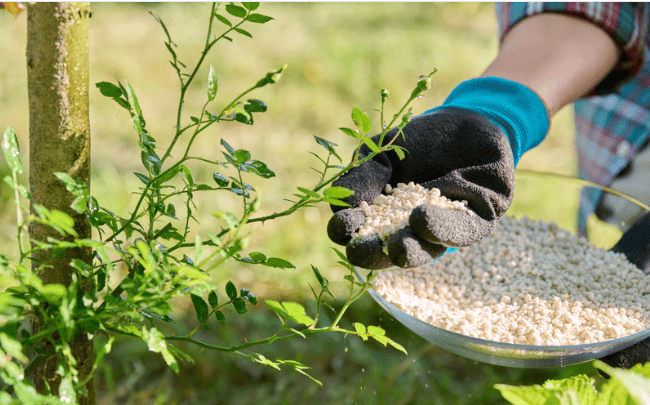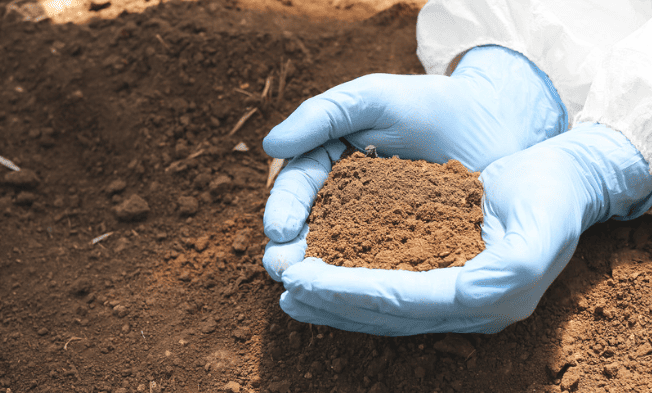Lawn Fertilization
Understanding Lawn Fertilization: Types and Schedules
Maintaining a lush, vibrant lawn requires more than regular mowing and watering. One critical component of lawn care is proper lawn fertilization. Lawn fertilizers provide essential nutrients that grass needs to grow strong, green, and resilient.
This comprehensive guide explores the different types of lawn fertilizers, including liquid fertilizer, their benefits, and optimal fertilization schedules to ensure your lawn thrives throughout the year.
Understanding the fertilizer bag labels can help you choose the right product for your lawn. It’s crucial to perform a soil test to determine your lawn’s specific nutrient needs. This will guide you in selecting a fertilizer that addresses any deficiencies and provides the appropriate essential nutrients.
Knowing how much fertilizer to apply and when to do it is key to achieving a vibrant lawn. Whether you opt for granular or liquid fertilizer, following a tailored schedule can make a significant difference.
Regularly fertilize your lawn according to the recommendations for your chosen product to keep your grass vibrant and resilient throughout the seasons.
The Importance of Lawn Fertilization
Lawn fertilization replenishes the essential nutrient that grass needs to grow. Over time, soil can become depleted of nutrients due to factors such as weather, plant uptake, and leaching. Lawn fertilizers provide a balanced diet for your grass, promoting a vibrant lawn, enhancing color, and improving disease resistance.
To choose the best lawn fertilizer, check the fertilizer bag for the right nutrient mix. Knowing how much fertilizer to apply is crucial; using too little can be ineffective, while too much can harm your lawn. Proper fertilizer application involves following the recommended rates and schedules for your specific type of fertilizer.
Focusing on fertilizing your lawn correctly ensures that your grass remains vibrant and resilient throughout the year.
Types of Lawn Fertilizer
Benefits of Using Organic Fertilizers
Organic Fertilizers
Organic fertilizers, derived from natural sources such as compost, manure, and bone meal, release nutrients slowly, providing long-term nourishment for your lawn. They improve soil structure, enhance microbial activity, and increase the soil’s ability to retain water and nutrients.
Organic fertilizers help create a more sustainable lawn care routine and contribute to a greener environment by growing a vibrant lawn.
Synthetic Fertilizers
Synthetic fertilizers are manufactured using chemical processes. They provide nutrients in a readily available form and are often formulated with precise nutrient ratios, allowing for quick and targeted feeding.
Synthetic fertilizers are highly effective for rapid green-up and addressing specific nutrient deficiencies, offering efficient, immediate results.
Slow-Release Fertilizers
Available in both organic and synthetic forms, slow-release fertilizers release nutrients gradually over an extended period. This reduces the risk of nutrient leaching and provides consistent feeding for your lawn. Slow-release fertilizers are ideal for maintaining steady growth and minimizing the need for frequent applications.
Liquid Fertilizers
Applied in liquid form, these fertilizers can be absorbed quickly by grass. Liquid fertilizers are ideal for foliar feeding and addressing immediate nutrient deficiencies. They can be applied using a garden hose or a dedicated spray system, providing rapid nutrient uptake for a quick boost.
Granular Fertilizers
Granular fertilizer is dry, solid particles spread evenly over the lawn. It is easy to apply and provides a slow, steady release of nutrients. Granular fertilizer is available in both organic and synthetic formulations and is suitable for general lawn maintenance. It is effective for widespread feeding across the entire lawn.
Important Considerations
When choosing fertilizer products, be cautious not to over-fertilize, as this can lead to nutrient imbalances and potential damage. Properly fertilizing your lawn involves selecting the right type of fertilizer based on your lawn’s needs and ensuring proper fertilizer application.
For quick results, quick-release fertilizers can provide an immediate boost, while slow-release fertilizers ensure sustained nourishment. Use fertilizer granules for ease of application and a steady nutrient supply, or opt for quick-release fertilizers for faster green-up.
Essential Nutrients for Lawn Health
Grass requires a variety of nutrients to grow and thrive. The three primary nutrients found in most lawn fertilizers are nitrogen (N), phosphorus (P), and potassium (K), collectively known as NPK.
Nitrogen (N): Essential for promoting lush, green growth and improving the lawn’s overall appearance. Nitrogen fertilizers are crucial for enhancing chlorophyll production and photosynthesis, making them vital for lawn fertilizing and growing healthy grass.
Phosphorus (P): Important for root development and overall plant vigor. Phosphorus helps grass establish a strong root system, which is vital for nutrient uptake and resilience. Properly apply fertilizer with phosphorus to support robust root growth and a well-established lawn.
Potassium (K): Enhances disease resistance, drought tolerance, and overall stress resilience. It helps regulate water uptake and strengthens cell walls, making grass more robust and better able to withstand environmental stresses.
In addition to NPK, lawns also benefit from secondary nutrients such as calcium, magnesium, and sulfur, as well as micronutrients like iron, manganese, and zinc. Ensuring your lawn receives these important nutrients is key to its overall health and growth.
Use fertilizer spreaders for even application, and consider quick-release fertilizers for immediate results. Monitoring the pH range of your soil can also help tailor your fertilization strategy to meet your lawn’s specific needs.
Fertilization Schedules
Creating an effective fertilization schedule is crucial for maintaining a lush lawn. The schedule should be tailored to your grass type, climate, and soil conditions. Here is a general guide for fertilizing cool-season lawn grasses and warm-season grasses:
Cool-Season Grasses
Cool-season grasses, such as Kentucky bluegrass, fescue, and perennial ryegrass, thrive in cooler climates and have peak growth periods in spring and fall.
- Early Spring: Apply a balanced lawn fertilizer to encourage green-up and support early growth. Use a slow-release fertilizer to provide consistent feeding.
- Late Spring: Apply a high-nitrogen fertilizer to promote vigorous growth and enhance color. This helps the grass build strength before the summer heat.
- Summer: Depending on the grass’s condition, you may apply a light application of slow-release fertilizers to maintain growth and resilience. Avoid over-fertilizing, as excessive nitrogen can stress the grass in hot weather.
- Early Fall: This is the most critical fertilization period for cool-season grasses. Apply a balanced fertilizer to support root development and prepare the lawn for winter dormancy.
- Late Fall: Apply a high-potassium fertilizer to enhance disease resistance and improve winter hardiness. This helps the grass survive the cold months and green up quickly in spring.
Warm-Season Grasses
Warm-season grasses, such as Bermuda, Zoysia, and St. Augustine, thrive in warmer climates and have peak growth periods in late spring and summer.
- Early Spring: Apply a balanced fertilizer to support green-up and early growth. Use a slow-release formula for consistent feeding.
- Late Spring: Apply a high-nitrogen fertilizer to promote vigorous growth and enhance color. This helps the grass build strength for the summer growing season.
- Summer: Continue with regular applications of a high-nitrogen fertilizer to support peak growth and maintain a green lawn. Water the lawn deeply and regularly to prevent stress.
- Early Fall: Reduce the frequency of fertilizing and switch to a balanced or slow-release fertilizer to support continued growth and resilience as temperatures begin to cool.
- Late Fall: Apply a high-potassium fertilizer to enhance disease resistance and improve winter hardiness. This helps the grass prepare for dormancy and ensures a healthy start in the spring.
Soil Test and Custom Fertilization Plans
Soil testing is an essential step in creating a custom fertilization plan for your lawn. By analyzing your soil’s nutrient levels, pH, and organic matter content, you can determine your grass’s specific needs and choose the right fertilizer formulations.
Soil test kits are available at garden centers, or you can send samples to a local agricultural extension service for detailed analysis. Once you have the results, you can tailor your fertilization approach to address specific nutrient deficiencies. For instance, if your soil test reveals a need for more nitrogen, you might use nitrogen fertilizers to promote green grass and a lush lawn.
When applying fertilizer, consider integrating soil amendments based on test results to improve overall soil health. You might also choose quick release fertilizers for immediate nutrient availability or opt for products derived from plant or animal sources to support long-term soil fertility.
Combining these strategies helps ensure you achieve the greenest lawn possible, while also providing the necessary nutrients for grass seed or existing turf.
Application Tips for Optimal Results
- Proper Timing: Apply fertilizers at the right time based on your grass type and growth cycles. Avoid fertilizing during periods of extreme heat or drought, as this can stress the grass.
- Even Coverage: Use a broadcast spreader for granular fertilizers to ensure even distribution. For liquid fertilizers, use a garden hose-end sprayer or a calibrated spray system to apply an even coat.
- Watering: Water your lawn thoroughly after fertilization to help dissolve and activate the nutrients. This also prevents fertilizer burn and protects the grass from potential damage.
- Follow Label Instructions: Always follow the manufacturer’s instructions for application rates and safety precautions. Excess fertilizer can harm your lawn and the environment.
- Safety Precautions: Wear protective clothing, gloves, and a mask when applying fertilizers to avoid contact with skin and inhalation of dust or fumes.
Common Fertilization Mistakes to Avoid
- Over-Fertilization: Applying too much fertilizer can lead to nutrient runoff, water pollution, and lawn damage. Follow recommended application rates and schedules.
- Under-Fertilization: Insufficient fertilization can result in nutrient deficiencies, weak growth, and increased susceptibility to pests and diseases.
- Incorrect Timing: Fertilizing at the wrong time can stress the grass and reduce the effectiveness of the nutrients. Stick to recommended schedules based on your grass type.
- Uneven Application: Uneven coverage can create patches of over-fertilized and under-fertilized areas. Use proper equipment and techniques for even distribution.
- Ignoring Soil Health: Fertilizing should be part of a comprehensive lawn care plan that includes proper watering, mowing, and soil management. Healthy soil supports healthy grass.
Environmental Considerations
Responsible lawn fertilization practices help protect the environment and promote sustainable lawn care. Here are some tips to minimize environmental impact:
- Use Organic Fertilizers: Organic fertilizers are made from natural materials and have lower environmental impact compared to synthetic options.
- Reduce Runoff: Avoid applying fertilizers before heavy rain, which can cause nutrient runoff and water pollution. Use slow-release fertilizers to minimize leaching.
- Recycle Grass Clippings: Leave grass clippings on the lawn after mowing to decompose and return nutrients to the soil. This reduces the need for additional fertilizing.
- Compost Organic Waste: Composting yard waste and kitchen scraps creates a rich, natural fertilizer that can be used to nourish your lawn and garden.
- Educate Yourself: Stay informed about best practices for lawn fertilization and environmental stewardship. Follow guidelines from local extension services and environmental agencies.
Conclusion
Understanding lawn fertilization is key to achieving a healthy lawn that is lush, green, and resilient. By choosing the right types of lawn fertilizers, adhering to proper fertilization schedules, and following best practices for application, you can ensure your lawn receives the important nutrients it needs to thrive.
Spring application and fall application are crucial for promoting strong roots and preparing your lawn for seasonal changes. During early summer, maintaining a fertilization routine supports actively growing grass and helps achieve a vibrant, green lawn.
Regular soil testing and customized fertilization plans help address specific needs, including for varieties like tall fescue, and maintain optimal soil health. With careful attention to your lawn’s needs, including the proper balance of nutrients and timing, you can enjoy a thriving lawn throughout the year.
For more personalized advice and professional assistance with lawn fertilizing, consult with a local lawn care expert or extension service. They can provide tailored recommendations based on your specific grass type, soil conditions, and environmental factors.





